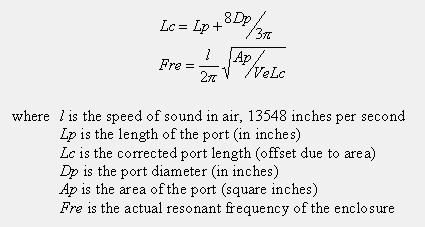You can certainly make the cabinets larger, but you'll need to modify the port to keep the same Helmholtz frequency. The Delta 12LFA works well in cainets fom 2.0ft3 to 6.0ft3 tuned to 30Hz. Larger cabinets develop deeper bass.One thing to watch out for is internal standing waves. As the cabinet is made larger, internal standing waves develop at lower frequencies. This makes them harder to damp with acoustic insulation.
If you make a tower, you'll probably want to either model the cabinet with Martin King's spreadsheets or go through a cut-try-measure process to find configurations that don't have response anomalies from internal pipe modes. You have two competing priorities in this case, in that you'll need to keep the woofer/tweeter relationship intact so uniform directivity is maintained but you'll also want to move the woofer and port around to find locations that mitigate response abberations from internal reflections.
I know this may sound repetitive to you but you would be a lot better off building the three π speakers as designed and adding a pair of subs. This will give deeper bass extension and smooth room modes at the same time. There's no way to get the same performance without subs.
I understand if you don't have room, but in my experience, if you don't have room for subs then the larger box isn't needed either. The three π and four π models are slightly overdamped which conjugates room gain, and this alignment sounds pretty good to me in small rooms. A light touch of subs would still be nice, but only to smooth modes, not necessarily to add impact. But if you make the box larger, the alignment necessarily shifts towards having less damping and this can start to sound boomy. So I think I'd prefer the stock box to one that was made larger in a small room, even if subs weren't added.
Maybe your experience will be different. Maybe you'll like the larger box. It sure couldn't hurt to build some four or five cubic foot cabinets and see, sort of a trial run. You could always just scale up the three π cabinet, and put the woofer and tweeter on the baffle in positions with the same distance between them as the stock build. Give it a trial run listen, and if you like what you hear, optimize it to evaluate and mitigate internal standing waves or anything else that crops up.
To calculate the port size, use the following formula:

Here's a little BASIC program that will calculate the formulas for you, if you can still find an old BASIC interpreter around somewhere.
10 INPUT"Enclosure Volume";VE
20 INPUT"Diameter of Port";PD
30 INPUT"Length of Port";PL
40 VB=VE*1728:PI=3.1415926535:AP=PI*((PD/2)^2):LC=PL+((8*PD)/(3*PI))
50 FR=(13548/(2*PI))*(AP/(VB*LC))^.5
60 PRINT"Fr =";FR;"Hz."
70 GOTO 10







